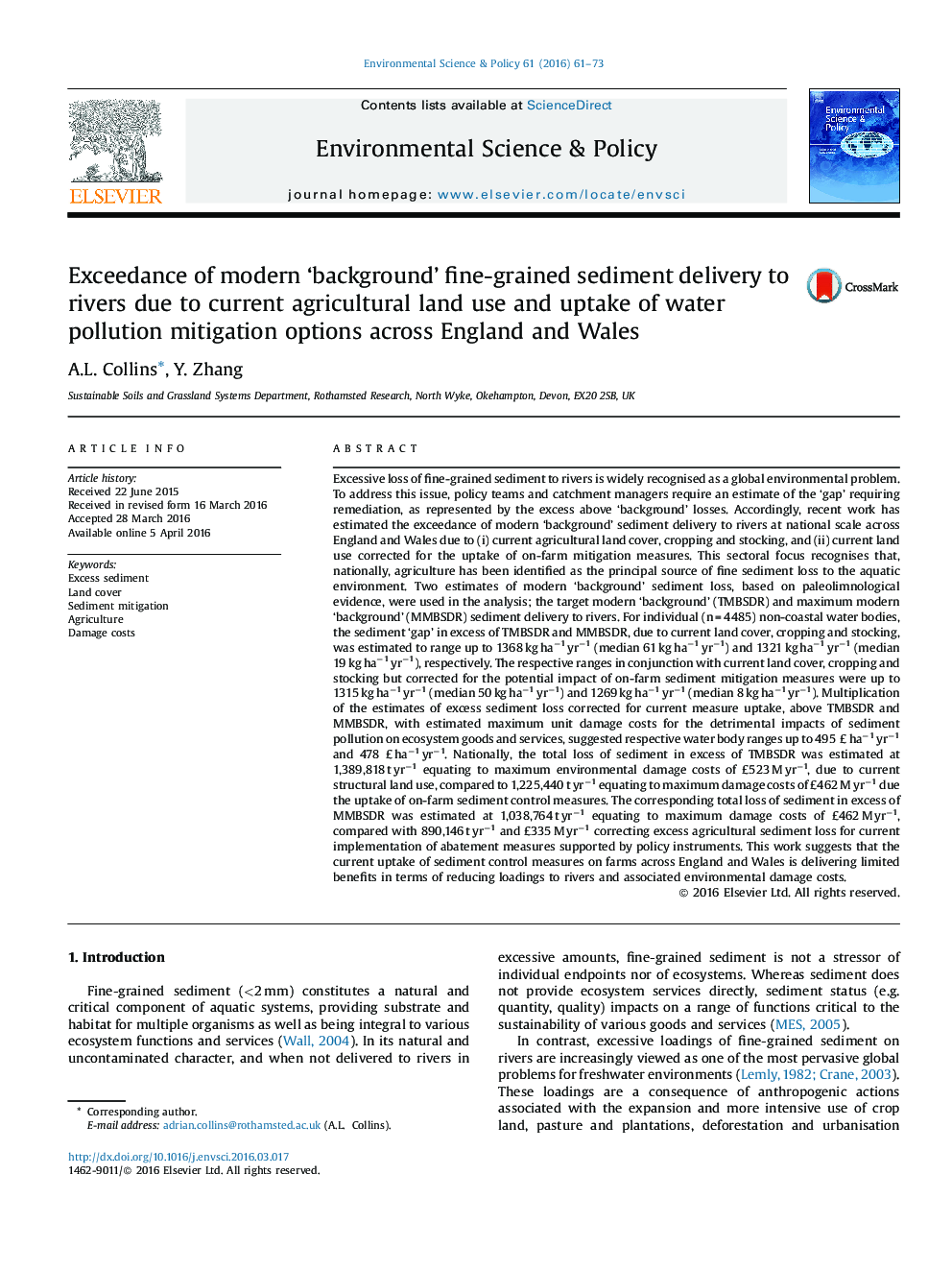| کد مقاله | کد نشریه | سال انتشار | مقاله انگلیسی | نسخه تمام متن |
|---|---|---|---|---|
| 7466818 | 1485047 | 2016 | 13 صفحه PDF | دانلود رایگان |
عنوان انگلیسی مقاله ISI
Exceedance of modern 'background' fine-grained sediment delivery to rivers due to current agricultural land use and uptake of water pollution mitigation options across England and Wales
ترجمه فارسی عنوان
غلظت رسوبات رسوبی ریز دانه به رودخانه ها به دلیل استفاده از زمین های کشاورزی فعلی و استفاده از گزینه های کاهش آلودگی آب در سراسر انگلستان و ولز
دانلود مقاله + سفارش ترجمه
دانلود مقاله ISI انگلیسی
رایگان برای ایرانیان
کلمات کلیدی
رسوب بیش از حد، پوشش زمین، کاهش رسوب، کشاورزی، هزینه های خسارت
موضوعات مرتبط
مهندسی و علوم پایه
مهندسی انرژی
انرژی های تجدید پذیر، توسعه پایدار و محیط زیست
چکیده انگلیسی
Excessive loss of fine-grained sediment to rivers is widely recognised as a global environmental problem. To address this issue, policy teams and catchment managers require an estimate of the 'gap' requiring remediation, as represented by the excess above 'background' losses. Accordingly, recent work has estimated the exceedance of modern 'background' sediment delivery to rivers at national scale across England and Wales due to (i) current agricultural land cover, cropping and stocking, and (ii) current land use corrected for the uptake of on-farm mitigation measures. This sectoral focus recognises that, nationally, agriculture has been identified as the principal source of fine sediment loss to the aquatic environment. Two estimates of modern 'background' sediment loss, based on paleolimnological evidence, were used in the analysis; the target modern 'background' (TMBSDR) and maximum modern 'background' (MMBSDR) sediment delivery to rivers. For individual (n = 4485) non-coastal water bodies, the sediment 'gap' in excess of TMBSDR and MMBSDR, due to current land cover, cropping and stocking, was estimated to range up to 1368 kg haâ1 yrâ1 (median 61 kg haâ1 yrâ1) and 1321 kg haâ1 yrâ1 (median 19 kg haâ1 yrâ1), respectively. The respective ranges in conjunction with current land cover, cropping and stocking but corrected for the potential impact of on-farm sediment mitigation measures were up to 1315 kg haâ1 yrâ1 (median 50 kg haâ1 yrâ1) and 1269 kg haâ1 yrâ1 (median 8 kg haâ1 yrâ1). Multiplication of the estimates of excess sediment loss corrected for current measure uptake, above TMBSDR and MMBSDR, with estimated maximum unit damage costs for the detrimental impacts of sediment pollution on ecosystem goods and services, suggested respective water body ranges up to 495 £ haâ1 yrâ1 and 478 £ haâ1 yrâ1. Nationally, the total loss of sediment in excess of TMBSDR was estimated at 1,389,818 t yrâ1 equating to maximum environmental damage costs of £523 M yrâ1, due to current structural land use, compared to 1,225,440 t yrâ1 equating to maximum damage costs of £462 M yrâ1 due the uptake of on-farm sediment control measures. The corresponding total loss of sediment in excess of MMBSDR was estimated at 1,038,764 t yrâ1 equating to maximum damage costs of £462 M yrâ1, compared with 890,146 t yrâ1 and £335 M yrâ1 correcting excess agricultural sediment loss for current implementation of abatement measures supported by policy instruments. This work suggests that the current uptake of sediment control measures on farms across England and Wales is delivering limited benefits in terms of reducing loadings to rivers and associated environmental damage costs.
ناشر
Database: Elsevier - ScienceDirect (ساینس دایرکت)
Journal: Environmental Science & Policy - Volume 61, July 2016, Pages 61-73
Journal: Environmental Science & Policy - Volume 61, July 2016, Pages 61-73
نویسندگان
A.L. Collins, Y. Zhang,
